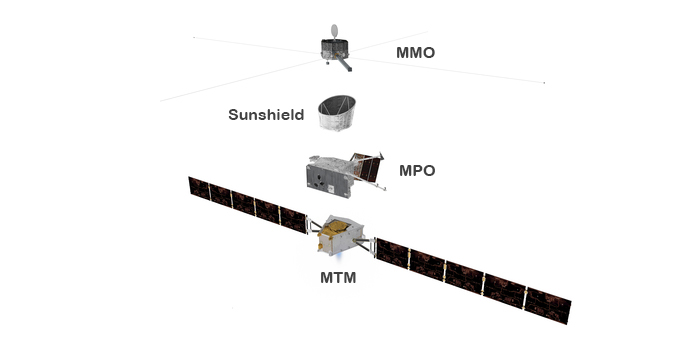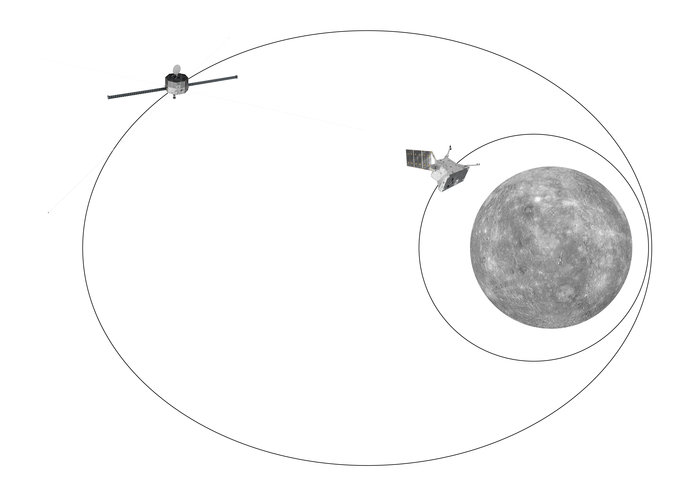BepiColombo
BepiColombo, an ESA mission being conducted in cooperation with Japan, will explore Mercury, the planet closest to the Sun. Europe's space scientists have identified the mission as one of the most challenging long-term planetary projects, because Mercury's proximity to the Sun makes it difficult for a spacecraft to reach the planet and to survive in the harsh environment found there. The scientific interest in going to Mercury lies in the valuable information that such a mission can provide to enhance our understanding of the planet itself as well as the formation of our Solar System; information which cannot be obtained with observations made from Earth.
Why this name
The mission is named after the Italian mathematician and engineer Giuseppe (Bepi) Colombo (1920–84). He is known for explaining Mercury’s peculiar characteristic of rotating about its own axis three times in every two orbits of the Sun. He also proposed to NASA the interplanetary trajectories that would allow Mariner-10 multiple Mercury flybys, by using gravity assists at Venus for the first time.
Science objectives
The science objectives of the BepiColombo mission cover all aspects of the planet and its environment. Broadly speaking, this will be achieved by studying the following themes:
- The origin and evolution of a planet close to its parent star
- The planet’s interior structure and composition
- Characteristics and origin of its internal magnetic field
- Surface processes, such as cratering, tectonics, polar deposits and volcanism
- The structure, composition, origin and dynamics of Mercury's exosphere
- The structure and dynamics of Mercury's magnetosphere
- Einstein's Theory of General Relativity (by making precise measurements of the spacecraft’s orbit and position)
Mission configuration
The science mission will consist of two separate spacecraft that will orbit the planet. ESA is building one of the main spacecraft, the Mercury Planetary Orbiter (MPO), and the Institute of Space and Astronautical Science (ISAS) at the Japan Aerospace Exploration Agency (JAXA) will contribute the other, the Mercury Magnetospheric Orbiter (MMO).
The MPO will study the surface and internal composition of the planet, and the MMO will study Mercury's magnetosphere, that is, the region of space around the planet that is influenced by its magnetic field.
For launch and the journey to Mercury, the MPO and the MMO will be carried as part of the Mercury Composite Spacecraft (MCS). The MCS comprises, in addition to the two orbiters, the Mercury Transfer Module (MTM), which provides solar-electric propulsion and all services not required in Mercury orbit, and the MMO Sunshield and Interface Structure (MOSIF), which provides thermal protection and the mechanical and electrical interfaces for the MMO. ESA is building the MTM and the MOSIF. Shortly before Mercury orbit insertion, the MTM is jettisoned from the spacecraft stack. The MPO provides the MMO with the necessary resources and services until it is delivered into its mission orbit, when control is assumed by JAXA.

Exploded view of the BepiColombo spacecraft components
BepiColombo will be the Agency's first experience of sending a spacecraft to a region even hotter than Venus.
The way the journey from Earth to Mercury will be carried out will also be a first. After launch into Earth-escape orbit, the MCS will undergo a near-Earth commissioning phase. Leaving Earth on its way to Mercury, the spacecraft must decelerate against the Sun's gravitational attraction, which increases as it approaches the Sun. This is in contrast to accelerating away from the Sun, as is the case with journeys to the outer Solar System. In addition, the spacecraft orbital plane shall be changed to that of Mercury. BepiColombo will accomplish this deceleration and plane change by making clever use of the gravity of the Earth, Venus and Mercury itself, and by using solar-electric propulsion (SEP). ESA's technology mission, SMART-1, has demonstrated this innovative combination of low-thrust space propulsion and gravity assist.
When approaching Mercury, the spacecraft will use the planet's gravity in combination with conventional bipropellant thrusters to insert itself into a polar orbit. A special 'weak stability boundary' capture technique will be employed. This gives flexibility and is more robust against failures when compared to using the more traditional 'big kick', or single-burn capture, approach. The MMO will be released into its operational orbit, then the MOSIF will separate and the chemical propulsion system will bring the MPO to its lower orbit. The mission deployment sequence is schematically depicted in the figure. Observations from orbit are scheduled to last for one Earth year, with a possible one-year extension.

BepiColombo spacecraft in orbit around Mercury



